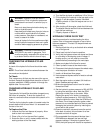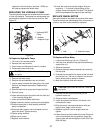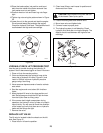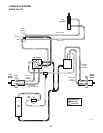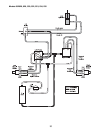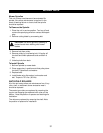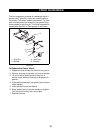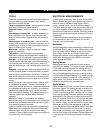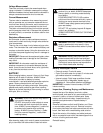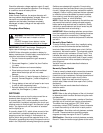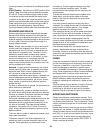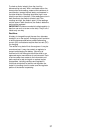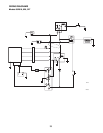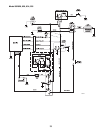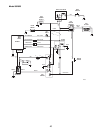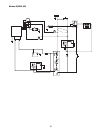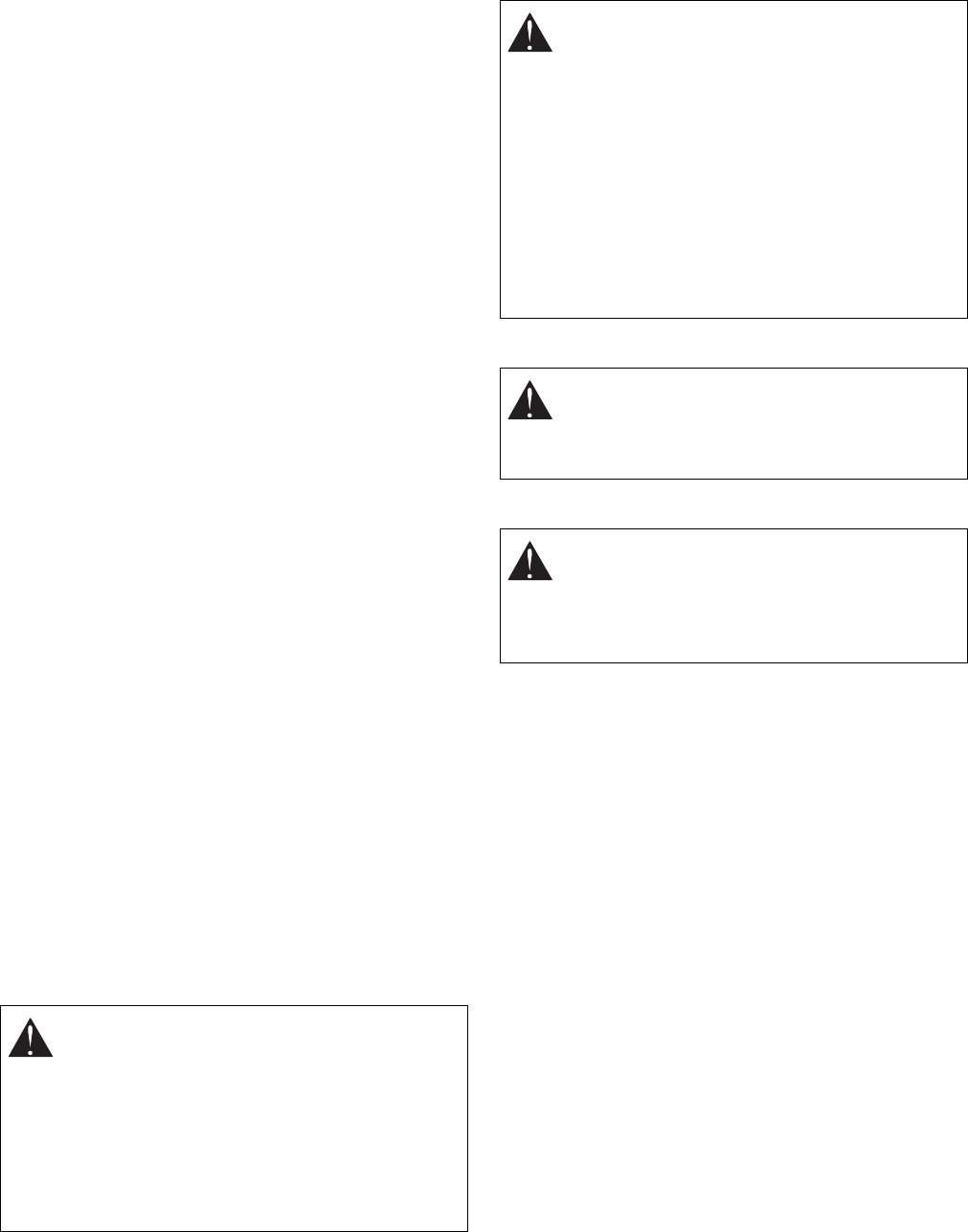
34
Voltage Measurement
There are two basic rules to be remembered when
using a voltmeter. A voltmeter measures the voltage
difference between the test leads and the voltmeter is
always connected across the circuit under test.
Current Measurement
The two rules to remember when measuring current
with an ammeter are; an ammeter measures the cur-
rent that flows through the meter, and to measure cur-
rent an ammeter must be connected into the circuit.
The latter rule means that the circuit must be opened,
and the ammeter wired into it. Because this procedure
is usually difficult, an ammeter is seldom used for trou-
bleshooting.
Resistance Measurement
An Ohmmeter is used to make resistance measure-
ments and to check continuity through wires and elec-
trical components.
There is one rule to keep in mind when using an ohm-
meter. The ohmmeter has a self contained battery and
requires no electrical power. Using the ohmmeter on a
circuit that has power applied may result in damage to
the meter.
IMPORTANT: Disconnect the equipment battery when
making Ohmmeter test or damage to the Ohmmeter
may result.
IMPORTANT: An ohmmeter reads the resistance of
whatever component is connected between the test
leads. It can be used to check wires, coils, light bulbs,
or any item that conducts current.
BATTERY
When charging battery, remove it from unit first. Keep
batteries out of reach of children. ALWAYS follow
information provided on battery by battery
manufacturer. Lead acid batteries generate explosive
gases. Severe chemical burns can result from
improper handling of battery electrolyte. Wear safety
glasses and proper protective gear when handling
batteries to prevent electrolyte from coming in contact
with eyes, skin, or clothing.
Battery Electrolyte First Aid
• External contact: Flush with water.
• Eyes: Flush with water for at least 15 minutes and
get medical attention immediately!
• Internal contact: Drink large quantities of water.
Follow with Milk of Magnesia, beaten egg or
vegetable oil. Get medical attention immediately.
IMPORTANT: In case of internal contact, DO NOT
induce vomiting.
Inspection, Cleaning, Drying, and Maintenance
Inspect the top of the battery, terminals, cables,
terminal posts, and case for any accumulation of dirt,
corrosion, cracks, or loose or broken parts. Keep
battery and its terminals clean. Inspect monthly to
maintain best performance. Replace battery if
damaged.
Remove hold down and bolt and lift battery out. Clean
or service battery away from unit. Remove corrosion
from battery terminals and cable connections with wire
brush, then wash with a weak baking soda solution.
Scrub the exterior of the battery and cable terminals
with a nonmetallic brush which has been dipped into a
mixture of baking soda and water.
After cleaning, apply a thin coat of grease or petroleum
jelly to terminals and cable ends to retard corrosion.
Reinstall battery.
WARNING: ELECTRIC SHOCK may result in
injury and/or damage to unit.
DO NOT allow tools or other objects to come
into contact with both terminals at the same
time. ALWAYS remove Negative (-) cable first
to reduce risk of sparks when removing
battery. ALWAYS connect Positive (+) cable
first, then connect Negative (-) cable when
installing battery.
WARNING: EXPLOSIVE GASES can result in
serious injury or death. ALWAYS keep open
flames, sparks, or smoking materials away
from battery.
POISONOUS BATTERY FLUID contains
sulfuric acid and its contact with skin, eyes, or
clothing can cause severe chemical burns.
ALWAYS wear safety glasses and protective
gear near battery.
DO NOT TIP any battery beyond 45 degree
angle in any direction.
ALWAYS KEEP BATTERIES OUT OF REACH
of children.
WARNING: REVERSE CONNECTIONS may
result in sparks which may result in injury.
ALWAYS connect/disconnect cables in proper
order
WARNING: Battery posts, terminals and
related accessories contain lead and lead
compounds, chemicals known to the State of
California to cause cancer and reproductive
harm. Wash hands after handling.



